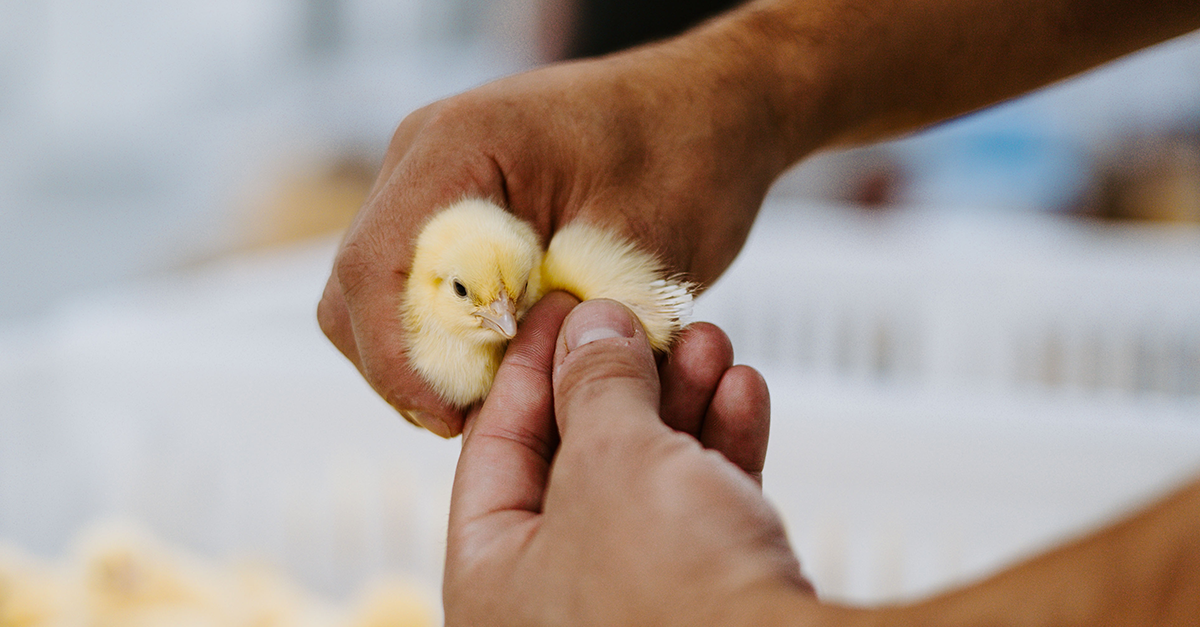Addressing Global Labour Shortages with AI-Driven Broiler Sexing

With Bloomberg reporting food price hikes as the "world runs short of workers," the labour crisis is acutely felt throughout the agriculture sector, significantly impacting poultry production. The increasing growth of the poultry industry, which surpasses other animal protein sectors, has led to a scarcity of skilled chick sexers. This labour-intensive process represents a critical bottleneck in the production chain, highlighting the urgent need for innovative solutions.
The Current State of Broiler Sexing
Traditionally performed manually, chick sexing gives producers greater production control, enhancing profitability. Today, various methods are employed, both manual and automated, including vent sexing, feather sexing, and in-ovo sexing - each serving different industry needs with their own advantages and limitations.
Feather-sexing is deemed the most suitable option for broiler production due to its less invasive process, compatibility with broiler breeds, cost-effectiveness, and high accuracy. However, recruiting the necessary skilled workforce, who can manually sex 2,500 chicks per hour, is becoming increasingly difficult.
Labour Limitations in Hatcheries
The challenges of chick sexing vary globally. In Europe and North America, issues such as worker shortages, training, and labour costs are significant barriers. While these costs are lower in developing countries, there are regulatory constraints and health concerns to contend with due to the intensive nature of the job.
- Workforce: In developed regions, these jobs often fail to attract younger workers, leading to recruitment challenges.
- Training costs: Training skilled feather sexers requires significant investment and constant recruitment to manage high staff turnover.
- Health concerns: The repetitive nature of the job can result in repetitive motion injuries, impacting workers' health.
- Regulatory constraints: Diverse labour laws, benefit requirements, and compensation complicate hiring and retention.
- High costs: The necessity for large crews means that labour is one of the highest operational expenses in hatcheries
Despite these challenges, sexing and sorting male and female broiler birds at the hatchery remains lucrative for the overall production process. The downstream benefits that feather-sexing provides are achieved through improved uniformity and tailored feeding at the farm. With a more reliable product entering the plant, consistency in bird size and weight enhances yield and boosts equipment performance.
Optimising Hatchery Management With Al
Automated feather-sexing technology offers hatcheries a solution to the current labour challenges. Leveraging artificial intelligence (Al), AgTech company TARGAN has developed WingScan, an Al-driven system capable of transforming the chick sexing process.
Performance: WingScan processes up to 100,000 chicks per hour, depending on the configuration, with up to 98% accuracy, outpacing manual sexing.
- Cost-efficient: Removes the need for large teams of skilled chick sexers, lowering training and recruitment costs.
- Consistency: Eliminates human error, providing reliable, all-day performance without risk of illness, absenteeism, or supervision.
- Scalability: The modular design ensures compatibility with any hatchery's current or desired bird throughput.
- Improved welfare: By minimising handling, stress on chicks is reduced, leading to better overall health.
Machine learning continuously improves the system by analysing extensive datasets of chick images and refining algorithms for greater performance and consistent accuracy. WingScan requires just one operator and can be seamlessly integrated into a hatchery's existing infrastructure and available space, positioned after shell separation and before vaccination.
Performance is constantly monitored by the manufacturer to ensure optimal service and reliability.
Future-Proofing Poultry Challenges
Poultry is set to remain a leading global protein source, meaning innovative and sustainable solutions are needed to address critical labour shortages already impacting operations.
Embracing technological advancements and automation is essential for overcoming these obstacles and ensuring the industry's success.
Automated sexing provides a practical solution, improving welfare, efficiency, and production in hatcheries. Adopting these Al-driven systems is crucial for poultry leaders to stay competitive, streamline operations, boost profitability, and meet the rising global demand for poultry products.
About WingScanTM
WingScanTM is a feather sex identification system using AI-powered advanced vision systems. The modular design can be customized to hatchery needs and offers scalable flexibility, processing between 500,000 and 4 million birds per week. For more information, visit TARGAN.com/WingScan
About TARGAN
TARGAN is an innovative animal AgTech systems company focused on transforming animal protein production industries worldwide. Founded in 2015 and based in Raleigh, North Carolina, the company's mission is to provide affordable, individualized technologies that will improve speed, accuracy and animal welfare. For more information, visit TARGAN.com
TARGAN is a registered trademark of TARGAN in the United States and other countries.
Media Contacts:
Charlotte Baker
+44 (0)20 8647 4467
charlotte.baker@garnettkeeler.com
Carlos Bautista
carlos.bautista@targan.com
